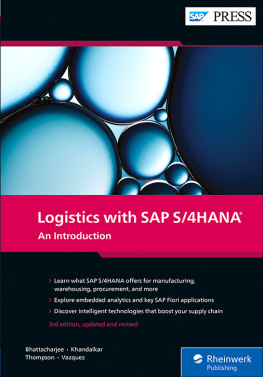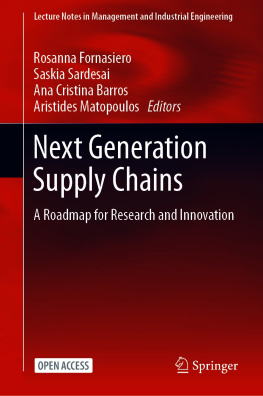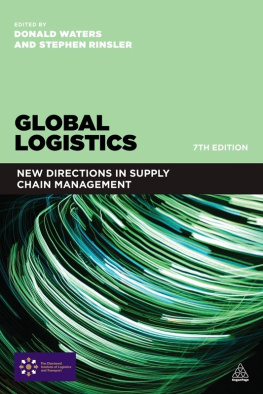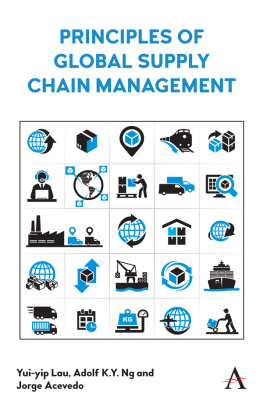About the Author
Euclides A. Coimbra has over 25 years of experience teaching kaizen and implementing it across a wide variety of business sectors worldwide. He has served in various global leadership roles within the Kaizen Institute since 1998, including Director and CEO of Global Operations and Founder and Managing Director of the Kaizen Institute Iberia.
Mr. Coimbra has strong experience in quality improvement using total quality management (TQM) and especially design of experiments and Taguchi methods. He received firsthand training in Lean flow and pull-system principles at the Kawasaki Heavy Industries motorcycle plant in Japan. Building on this, as well as many successful just-in-time and Toyota Production System implementations in extended supply chains within Europe, he formalized kaizen in logistics and supply chains as a pillar consulting capability of the Kaizen Institute.
Prior to joining the Kaizen Institute, Mr. Coimbra served at Texas Instruments as production engineer in charge of quality improvement projects, as an assistant professor of industrial engineering at the University of Porto (Portugal), and with the Price Waterhouse Manufacturing Consulting Department. He earned a masters degree in industrial engineering from the University of Porto, Faculty of Engineering.

Copyright 2013 by McGraw-Hill Education, LLC. All rights reserved. Except as permitted under the United States Copyright Act of 1976, no part of this publication may be reproduced or distributed in any form or by any means, or stored in a database or retrieval system, without the prior written permission of the publisher.
ISBN: 978-0-07-181105-7
MHID: 0-07-181105-2
The material in this eBook also appears in the print version of this title: ISBN: 978-0-07-181104-0, MHID: 0-07-181104-4.
All trademarks are trademarks of their respective owners. Rather than put a trademark symbol after every occurrence of a trademarked name, we use names in an editorial fashion only, and to the benefit of the trademark owner, with no intention of infringement of the trademark. Where such designations appear in this book, they have been printed with initial caps.
McGraw-Hill Education eBooks are available at special quantity discounts to use as premiums and sales promotions, or for use in corporate training programs. To contact a representative please e-mail us at bulksales@mcgraw-hill.com.
Information contained in this work has been obtained by McGraw-Hill Education, LLC from sources believed to be reliable. However, neither McGraw-Hill Education nor its authors guarantee the accuracy or completeness of any information published herein, and neither McGraw-Hill Education nor its authors shall be responsible for any errors, omissions, or damages arising out of use of this information. This work is published with the understanding that McGraw-Hill Education and its authors are supplying information but are not attempting to render engineering or other professional services. If such services are required, the assistance of an appropriate professional should be sought.
TERMS OF USE
This is a copyrighted work and McGraw-Hill Education and its licensors reserve all rights in and to the work. Use of this work is subject to these terms. Except as permitted under the Copyright Act of 1976 and the right to store and retrieve one copy of the work, you may not decompile, disassemble, reverse engineer, reproduce, modify, create derivative works based upon, transmit, distribute, disseminate, sell, publish or sublicense the work or any part of it without McGraw-Hill Educations prior consent. You may use the work for your own noncommercial and personal use; any other use of the work is strictly prohibited. Your right to use the work may be terminated if you fail to comply with these terms.
THE WORK IS PROVIDED AS IS. McGRAW-HILL EDUCATION AND ITS LICENSORS MAKE NO GUARANTEES OR WARRANTIES AS TO THE ACCURACY, ADEQUACY OR COMPLETENESS OF OR RESULTS TO BE OBTAINED FROM USING THE WORK, INCLUDING ANY INFORMATION THAT CAN BE ACCESSED THROUGH THE WORK VIA HYPERLINK OR OTHERWISE, AND EXPRESSLY DISCLAIM ANY WARRANTY, EXPRESS OR IMPLIED, INCLUDING BUT NOT LIMITED TO IMPLIED WARRANTIES OF MERCHANTABILITY OR FITNESS FOR A PARTICULAR PURPOSE. McGraw-Hill Education and its licensors do not warrant or guarantee that the functions contained in the work will meet your requirements or that its operation will be uninterrupted or error free. Neither McGraw-Hill Education nor its licensors shall be liable to you or anyone else for any inaccuracy, error or omission, regardless of cause, in the work or for any damages resulting therefrom. McGraw-Hill Education has no responsibility for the content of any information accessed through the work. Under no circumstances shall McGraw-Hill Education and/or its licensors be liable for any indirect, incidental, special, punitive, consequential or similar damages that result from the use of or inability to use the work, even if any of them has been advised of the possibility of such damages. This limitation of liability shall apply to any claim or cause whatsoever whether such claim or cause arises in contract, tort or otherwise.
CONTENTS
PART ONE
From Gemba Kaizen to Supply-Chain Excellence
PART TWO
The Dynamics of Kaizen in Logistics and Supply Chains
PART THREE
How to Implement Kaizen in Logistics and Supply Chains
PART FOUR
Appendices
FOREWORD
Lean has become one of the most popular management methods for enhancing the competitive strength of manufacturing and logistics companies in the past few decades. Because the introduction of Lean involves all levels of management and employs a number of unfamiliar terms such as kanban, takt time, push, jidoka, mizusumashi, and muda, it has not been easy to understand its full implications.
Consequently, Lean has so far been introduced in bits and pieces in many companies and not as a total supply-chain management system. Although the benefits of Lean are gained only when the web of the total flows has been extended throughout all the supply-chain processes, few companies have realized the full benefit of kaizen in logistics and supply chains.
As a result, very few companies so far have succeeded in embracing Lean as a total system across their entire companies.
Euclides Coimbras book, Kaizen in Logistics and Supply Chains, has come at an opportune time, when many companies are going through reexamination of their supply-chain strategies in the aftermath of the financial crisis and the pressures of global competition. Many companies are seeking a road map to enable a quantum leap in improving their supply operations.
Coimbras book will be a perfect guide both to those who wish to embrace Lean for the first time in their factories, warehouses, supply chains, or planning processes and to those who have begun their journey but have enjoyed only marginal success in embracing Lean.
The gist of the book can be captured in the following quotes:
For now, forget about the jargon and the acronyms. We only need to concentrate on making a total flow of materials and information and minimize it.
The information of the flow should come from the customer order and not from a sales forecast.
Next page







